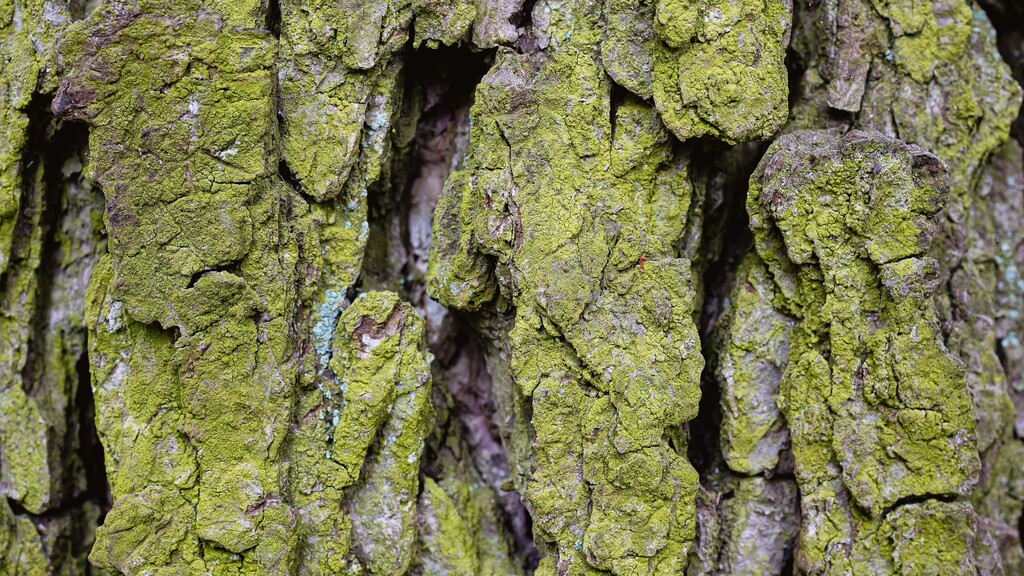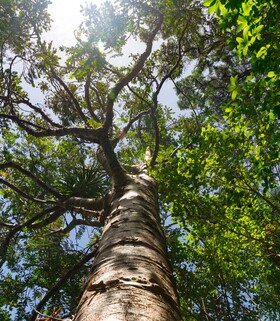


Communication within a tree has already been well studied. Plants perceive signals from the environment, for example about light or water conditions, with the help of their leaves and roots and exchange them with each other. The "command centre" is the root tips, which move through the soil like a worm, perceive water or toxins and send electrical signals to the leaves via conductive pathways in the trunk. If roots find too little water in the soil, for example, they transmit this to the leaves, which close their openings so that less water can evaporate. Leaves, on the other hand, send information to the roots, for example, about nutrient requirements or in the event of a pest infestation.
But trees do not only communicate with themselves, but also with each other. For example, trees of the same species divide up the available space via messengers in the root space by stopping root growth as soon as they grow too close to their nearest relatives. If a tree is attacked by pests, it also sends carbon compounds to trees in the vicinity, informing them of the infestation. To enable them to defend themselves against leaf-eating pests, the informed trees produce tannins that make the leaves no longer edible or poisonous. Trees can also communicate with animals. One example is wild tobacco: the plant uses nicotine against several species of caterpillars, and if that is not enough, it uses its scents to attract ants and lizards, which eat the insects.
In addition to the exchange of electrical signals, researchers also assume that trees exchange sap and nutrients with each other. For example, weak or sick trees are supported by neighbouring trees with tree sap and nutrients, or mother trees supply their offspring with sugar solutions through their roots.
The basis for this behaviour is the constant exchange of trees with fungi, the so-called mycorrhiza, a fine root network. Trees and fungi enter into a perfect symbiosis: The tree supplies the fungus with sugar compounds from photosynthesis, which the fungus cannot produce itself but needs as an energy supplier. In return, the fungus supplies the tree with nutrients from the soil that are difficult to tap, enlarges the root surface of the tree and facilitates the absorption of nutrients and water by increasing the contact surface with the soil. In addition, some mycorrhizal fungi produce toxins that kill tree pests and filter heavy metals and other pollutants from the soil.
In total, forests worldwide store up to 4 billion tonnes of CO2 per year. The Amazon rainforest alone filters a quarter of this. But how high is the compensatory capacity per tree? Trees absorb carbon dioxide - a tree consists on average of 47 percent pure carbon - because they need it for their own growth. It is estimated that trees can absorb a global average of about 10 kg of CO2 per year. More precise figures are available for the Latin American tropics: here, a hectare of forest binds an average of 11 tonnes of CO2 per year in the first 20 years, and thus about 16 kg of CO2 per year per tree.
Basically, large trees with many leaves and large diameters absorb more CO2 than young trees. Young trees, on the other hand, absorb large amounts of CO2 just as they grow. For optimal CO2 absorption, also within afforestation projects, it is therefore important to take both sides into account: The preservation of existing old trees and the planting of new trees. Moreover, species-rich forests generally store more carbon than forests consisting only of coniferous or deciduous trees. A team of researchers from the University of Halle Wittenberg was able to prove in a study that mixed forests can store around twice as much carbon as monocultural forests. They are also more resistant to environmental influences such as storms or infestation by pests. Afforestation in pure monoculture is therefore not to be supported, but should rather be designed as close to nature as possible. This can be achieved, for example, with the "dynamic agroforestry" cultivation method.
It is well known that trees have a positive effect on our climate and ensure good air quality. But trees can do even more: they have a positive effect on our health. For example, a walk through the forest can help reduce stress and strengthen our immune system. Researchers have even found that hospital patients recover faster when they can see trees through their windows. In addition, the risk of cardiovascular disease is reduced, as is the risk of high blood pressure or diabetes, if you live in an area with many trees.